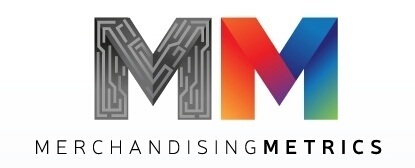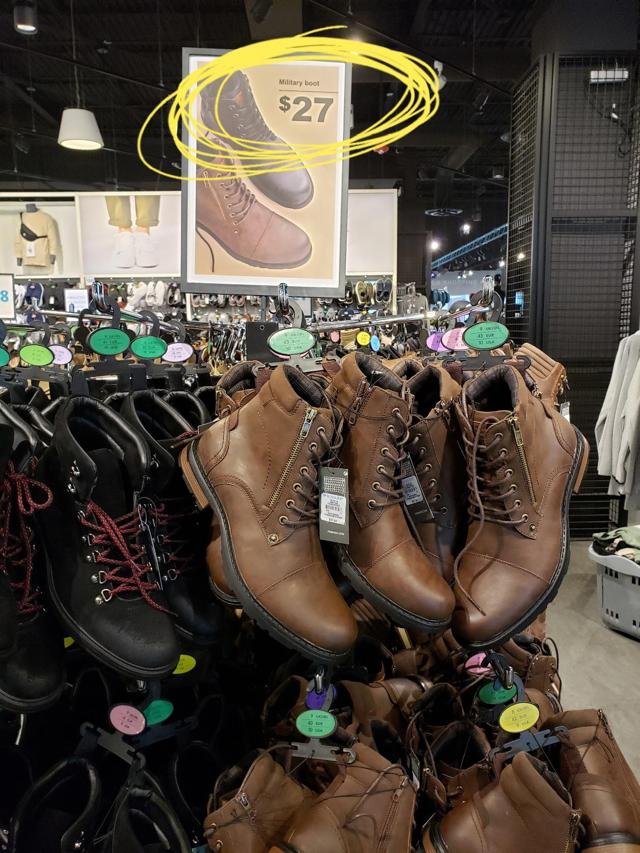The chart above profiles the Return to Shareholders for GPS versus the Dow Jones US Apparel Retailers. Investors will argue that this retailer is due for a strategic reset.
Risk as a differentiator
Yes, there are a lot of moving parts to this dynamic. Every brand and retailer are (or should be) working on the clarity and focus and direction of their Brand Promise (customer/product/experience alignment). Every brand and retailer are working hard on planning, merchandising and design, looking for the differentiating competitive edge. They are all working on it, but here I would argue that some retailers, including the Gap division, have decided that the right bet in this market is simply be “safe.” They have taken refuge in “boring.” A picture of their store today would be difficult to distinguish from a picture taken 2 to 5 to 12 years ago. In this volatile market, they have stopped taking risks. And here I submit that risk can be a retailer’s best friend if properly managed. Risk is a differentiator and every retailer needs some level of differentiation from the rest of the mall. Otherwise, the only tool left is price and the race to the bottom is on.
There is a lot of conversation now about “experiential” retailing, and again there are plentiful opinions about what that means. For simplicity’s sake, let’s acknowledge that the mall has a role for some experiences and the store has a role for others. And let’s forget AI and VR and other tech toys for the moment. What can the store do within the parameters of product and marketing to provide an “experience”? Simple…”treasure hunt.” Provide an ongoing flow of new and fresh products and create a sense of anticipation with the customer. Surprise and delight. Centuries old thinking but it’s still what drives customers to reach for their wallet (or phone).
This is where I think Gap is disappointing the shopper. They look “okay.” Sometimes they look “good.” But they do not surprise and delight. And now it’s to the point where “NEW” and “Save 40%” appear in the same email. “New” used to be when product sold at full margin ticketed price. Now “new” just means it wasn’t on the floor yesterday, but it’s 40% off just like everything else.
Here I propose a possible solution for Gap. New thinking about gross margin, product and promotion. Secede from the Race To The Bottom. Secede from the “boring middle.” The middle does not have to be boring. Learn how to “Surprise and Delight” again. Trade up, not DOWN.
Chase Gross Profit Dollars, not margin %. Explore and chase lower than normal margin % business
Approach gross margin % from a different merchandising angle. Too many ticketed prices are placeholders these days. They are a set-up for a % savings story. They no longer represent the real or perceived value of the item. This is not a sweeping condemnation of all brands and retailers, but enough brands and retailers have this practice that it deserves to be called out. It might not be possible to change the entire merchandising and marketing strategy overnight, but steps in the right direction can be made.
First some simple math. Let’s say an item has an LDP (landed duty paid) cost of $18. Retailers may ticket that item anywhere between $29 and $75 depending on their pricing and marketing strategy. At $75, the initial mark-up at the ticketed price is 76%. But the item is very quickly promoted at 40% off. Now the selling price is $45. Then 50% off… $37.50. Then 60% off… $30. The item will go through various promotional windows, BOGO’s and finally a clearance sale. The item finishes its selling life with an average selling price of $32. With an $18 cost, that’s a maintained margin for the life of the item of 43.8%. No, it did not start at $75. It started at $45. And after all the promotional activity and clearances were over the item had an Average OutThe Door retail of $32 and a margin of 43.8%. The 76% margin at the ticketed price of $75 was never real. It was simply setting up the promotional life that lay ahead for the item. And finally, with an $18 cost and an AOTD retail of $32, the Gross Profit Dollar (GPD) contribution of that item was $14 per unit sold.
If that item represents the margin profile of the whole store, this retailer is maintaining a gross margin of 43.8%. That’s not bad in the grand scheme of USA mall retailing. American Eagle Outfitters (AEO) has had gross profit in the range of 36-38% for the last 3 years. Abercrombie & Fitch (ANF) has been in the range of 60-61%. Chico’s FAS (CHS) has ranged from 36-38%. Gap had a gross margin in the range of 36-38% for the last 3 years.
From those real-world examples and the example of the item as described above, let’s create a scenario where the retailer in question has a maintained gross margin of 38%. Their ticketing and promotional strategy start with initial margins in the 70s, but it comes out at 38%. How can this retailer change their thinking and strategy to create a new, heightened integrity for their Brand Promise - a new, heightened value proposition, and a new heightened sense of “treasure hunt” in the eyes of the customer? By creating a new “Limited Edition” group of products that operate under a different set of margin rules than the balance of the store.
Create and Manage Scarcity
If $60 is a typical retail for the store, then $15 would be the ‘allowable’ LDP cost under the old rules of 75% initial ticketed margin. What if, under the new rules, the allowable LDP for that item is now $30? 50% initial margin at the ticketed price. A $30 cost item is going to provide a lot more quality than the $15 cost item. It is going to be a lot more special. It is going to give new meaning to the term “treasure hunt” within the walls of this mall store. This new item is “Limited Edition.” It is bought to sell out. The logic is about creating and managing scarcity. It is not about being afraid to sell out. That is actually precisely the whole point. The next “Limited Edition” item is ready to hit the floor. “Limited Edition” is not included in all the ongoing promotions. The quality and value of the item are supposed to be so obvious that the customer does not need a huge POS sign with a % savings to get their attention. And yes, there may still be some clearance markdowns, so the AOTD selling price is $54 with a 44% gross margin and a GPD contribution of $24, significantly better than the $14 of the old rules item.
Best Use of Space... Maximize Productivity
A note about the very real constraint in brick & mortar retail… space. It’s finite. It only holds “X” amount of inventory at any given moment, with some variance depending on category and fixtures. If the retailer under-buys an item, and sells out leaving a bare shelf, then both the item and the space have gone underutilized. Not good. But if an item sells out and is immediately replaced by a new item, then no problem. The first item was not maximized, so what? The space was immediately re-invested, and the space continued to be productive. There was no under-utilization of the space. No problem. So, it is not necessarily about maximizing any given item, it’s about maximizing the productivity of the space. “Best Use of Space” as I call it. If there is an item or category that operates at a lower than “normal” gross margin % but can maximize the Gross Profit Dollar contribution in a given space, then the scenario that puts more dollars in the bank would seem to be the way to go.
The “Limited Edition” example as offered is meant to break the momentum of chasing what feels like high margin business, but in reality, has created a vicious cycle of race to the bottom promotional activity based on % savings. The customer still believes this kind of promoting but this thinking is not sustainable, not on the retailer’s part and not on the customer's part. (Yes, we all still remember the pain associated with the strategy J.C. Penney (JCP) put in motion several years ago. The execution of this new strategy must be little more nuanced than what JCP did.) “Special” and “quality” and “value” and “differentiated” are sustainable and in fact are necessary for a long-term healthy retail business. This “Limited Edition” changes the rules on how margin is viewed, and it chases Gross Profit Dollars rather than gross margin %.
And now I expect to hear how difficult if not impossible this would all be to execute in the context of today’s mall retailing environment. I will simply say, something has got to give. Changes in legacy thinking are years overdue. AI and VR and BOPIS and next shiny new object are all going to have their role, but the customer ultimately buys the product. And chasing GPD with “Limited Edition” product is a vehicle for improving the retailer/customer relationship on many levels.
One last note. I was in the Primark store in Danbury, Connecticut, on September 12, 2019, and the boot display below stopped me in my tracks. It was the precise boot I had been shopping for… almost. I saw versions of this boot for $150-400 from various brands. And now I’m looking at a boot for $27? Okay, it’s made from polyurethane. My excitement quickly abated. What if they had offered a leather boot for $99? I would surely have been a customer.




